5. Inverse Kinematics
05 Oct 2019 | ROBOTICS
Inverse Kinematics
1. General Derivation(起源)
- Not possible for serial Kinematics
- Must be derived(获得) with geometrical intuition
- Not always possible to find in closed-form
- Numerical solutions sometimes required
2. Non-Linear Porblem
- Example: TCP moves linearly along axis z
- Joints movements are highly non-linear
2.1 Non-unique solution
- Same TCP pose can be reached with different joints configurations
- to solve this, we give singularities
- infinite joints solution exist for one single TCP pose to reduce
- Dependent linear value
3. Inverse Kinematics Steps
- Decouple wrist from arm

- find out that the position of the wrist point only depends on the first three joint axes of the robot
- moving the fourth, fifth, sixth joint will not modify the position of the wrist point
- so we can split into two part (wrist, arm) it called Decoupling
3. Base Frame and Tool
4. Adding a tool
5. Couple
- output of inverse kinematics is position of real joints
- They must be adjusted to calculate correct motor on target positions
Inverse Kinematics
1. General Derivation(起源)
- Not possible for serial Kinematics
- Must be derived(获得) with geometrical intuition
- Not always possible to find in closed-form
- Numerical solutions sometimes required
2. Non-Linear Porblem
- Example: TCP moves linearly along axis z
- Joints movements are highly non-linear
2.1 Non-unique solution
- Same TCP pose can be reached with different joints configurations
- to solve this, we give singularities
- infinite joints solution exist for one single TCP pose to reduce
- Dependent linear value
3. Inverse Kinematics Steps
- Decouple wrist from arm

- find out that the position of the wrist point only depends on the first three joint axes of the robot
- moving the fourth, fifth, sixth joint will not modify the position of the wrist point
- so we can split into two part (wrist, arm) it called Decoupling
3. Base Frame and Tool
4. Adding a tool
5. Couple
- output of inverse kinematics is position of real joints
- They must be adjusted to calculate correct motor on target positions


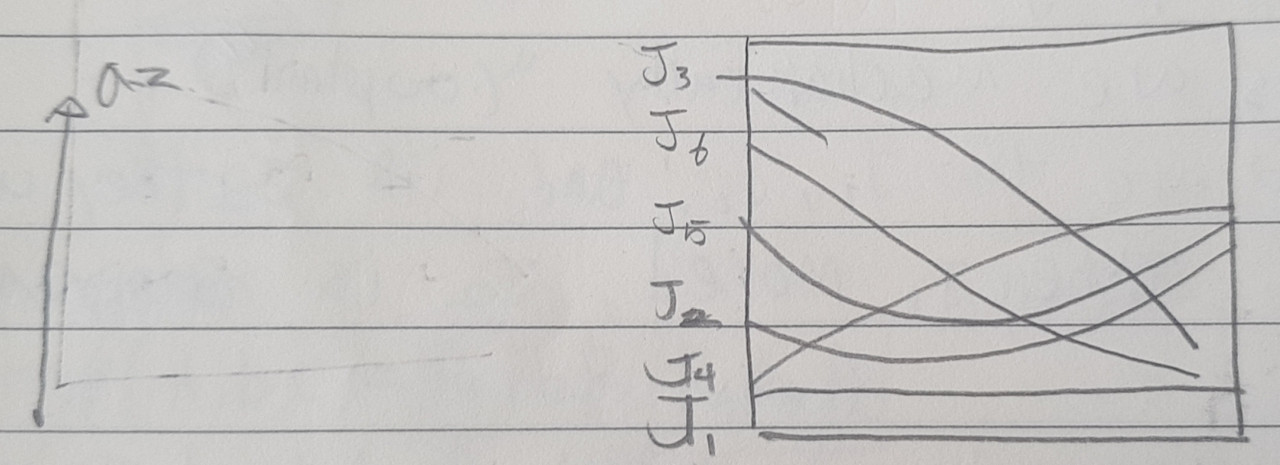
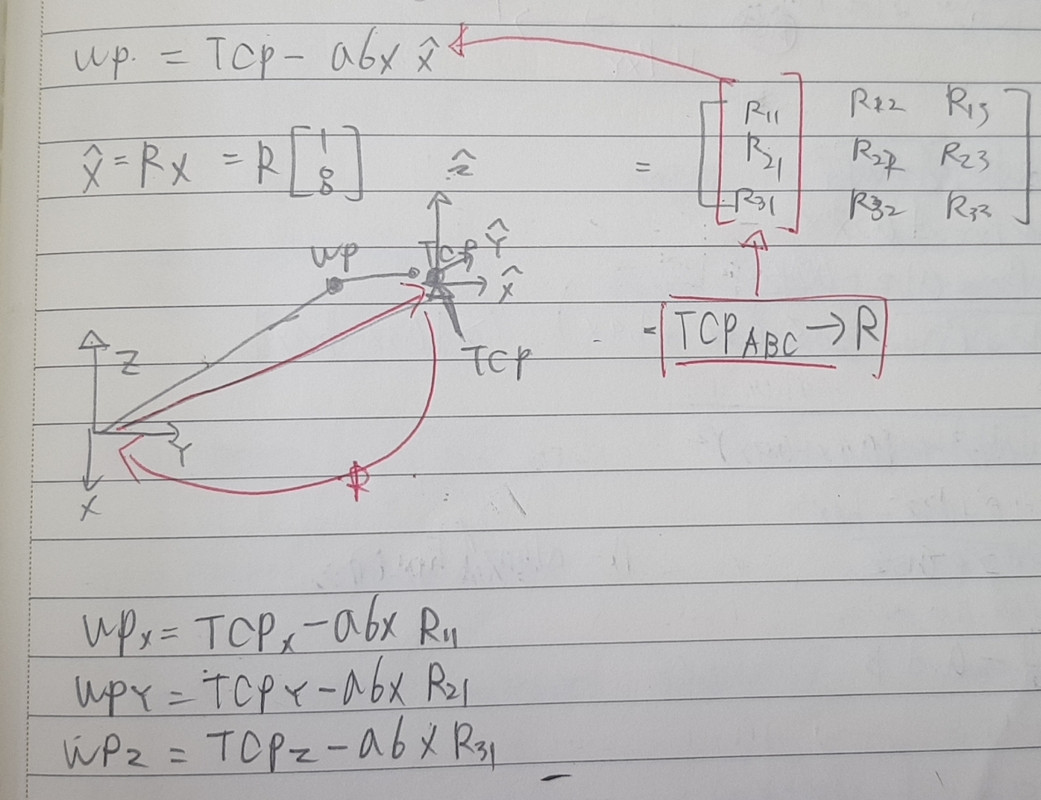

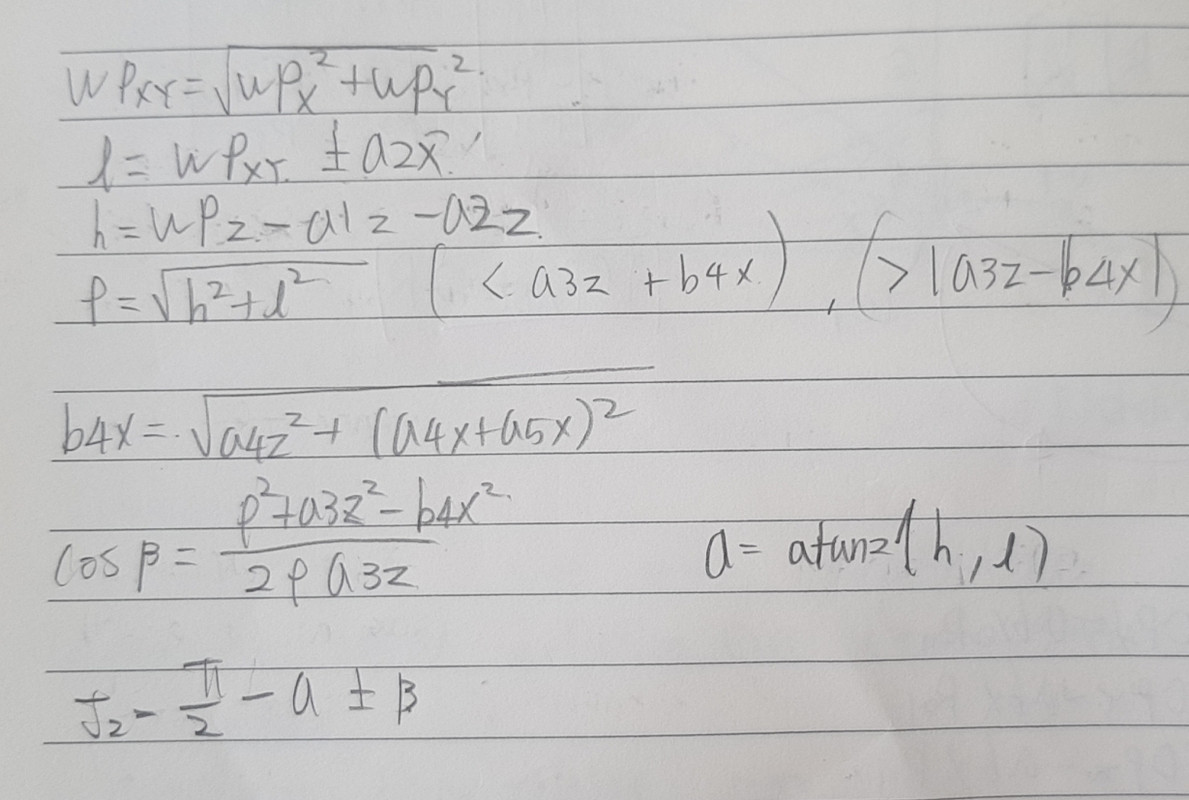
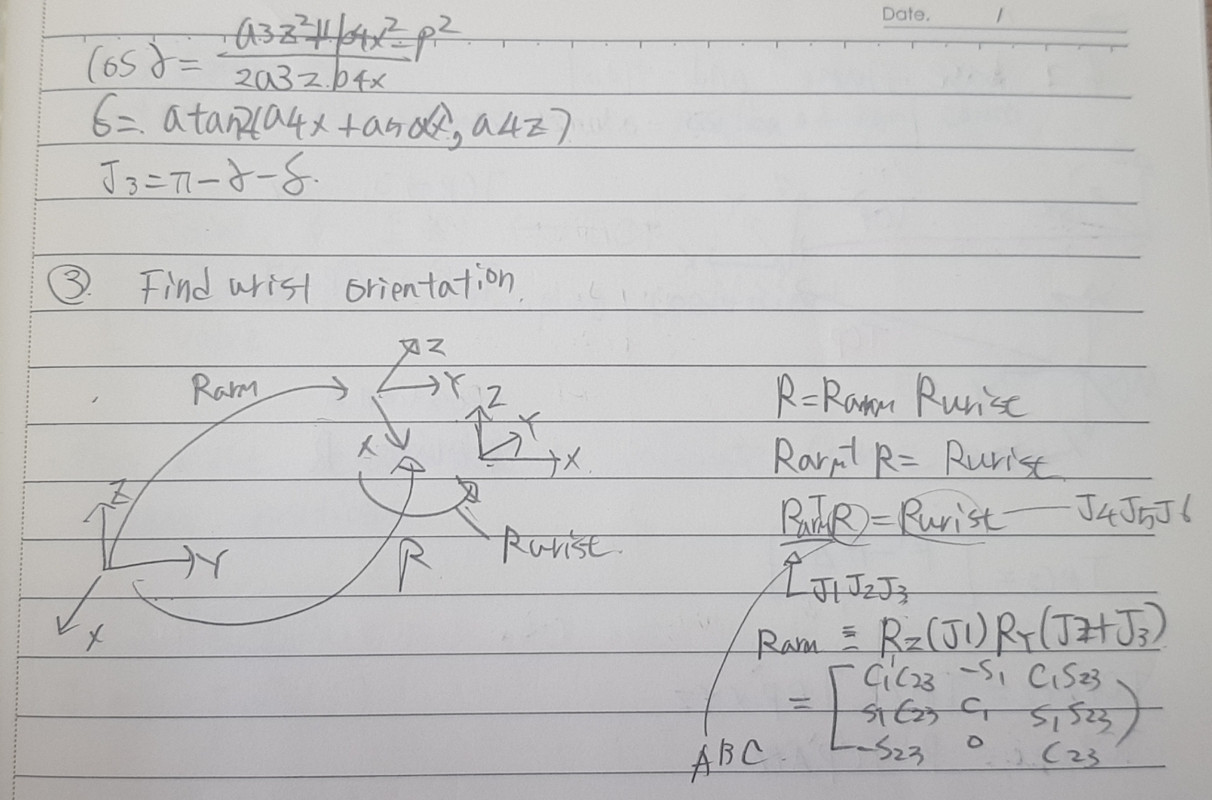
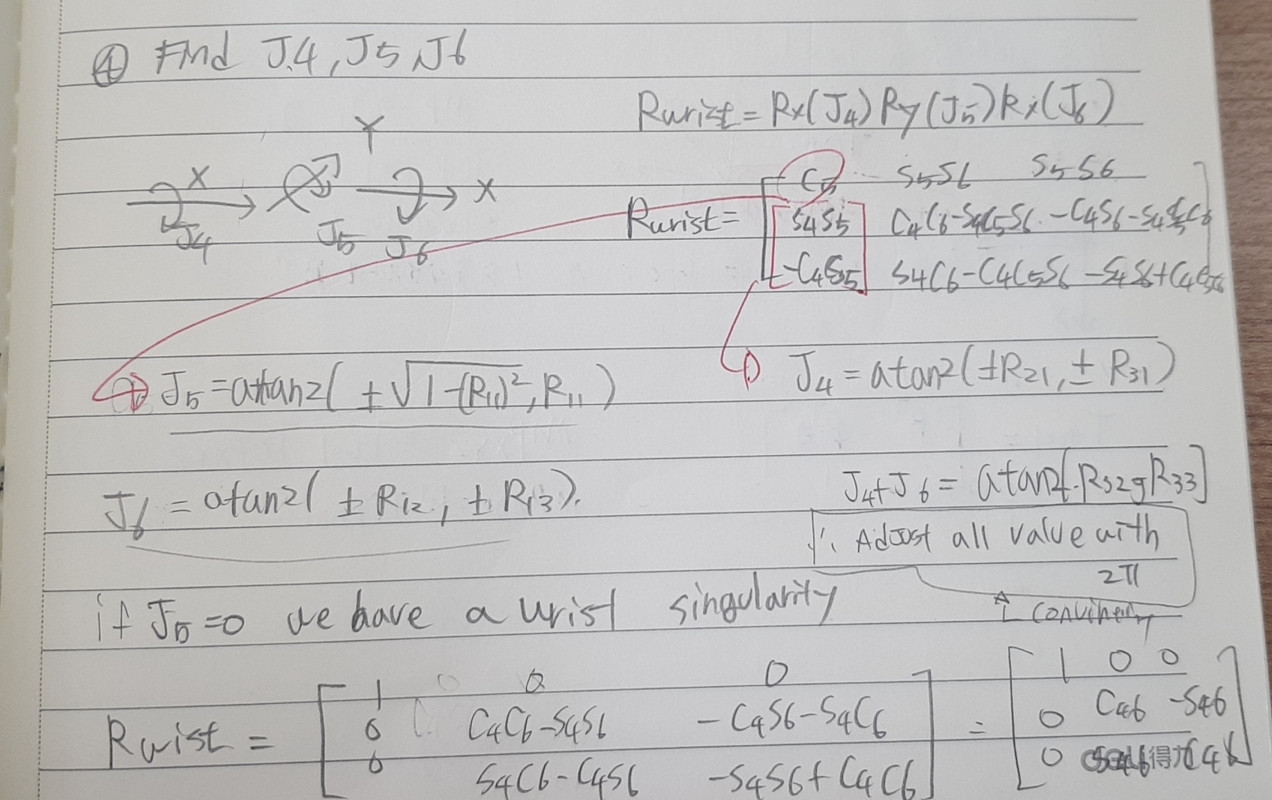
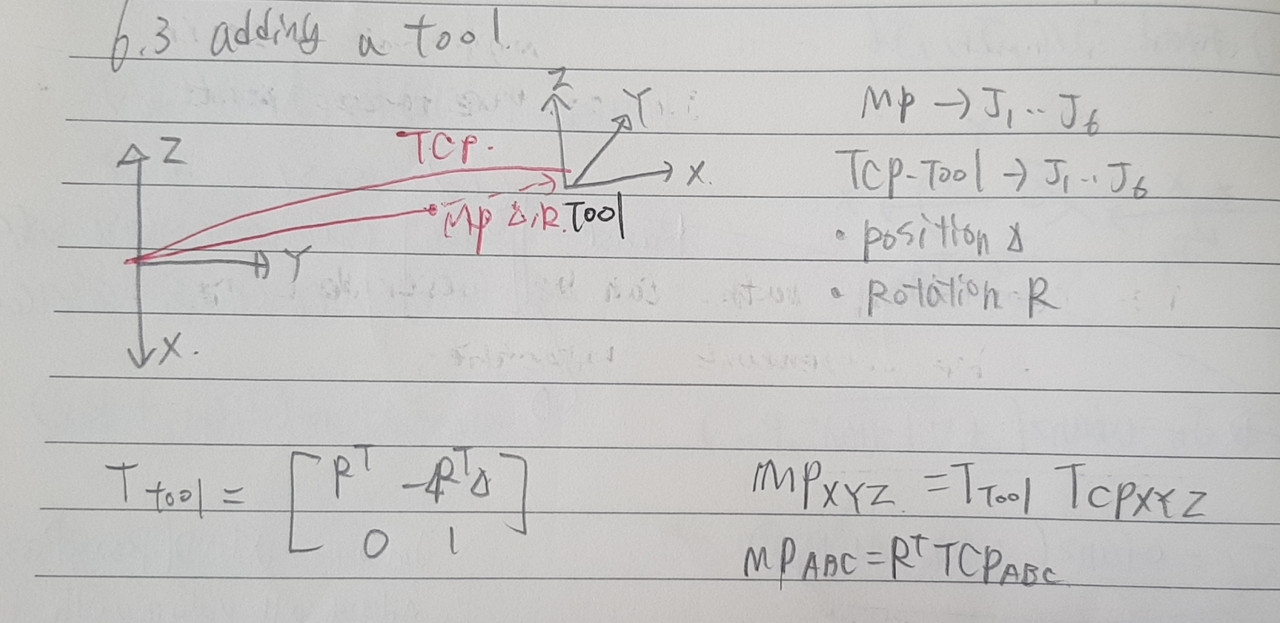


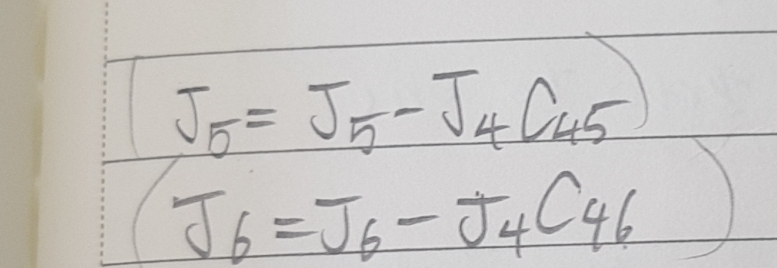
Comments